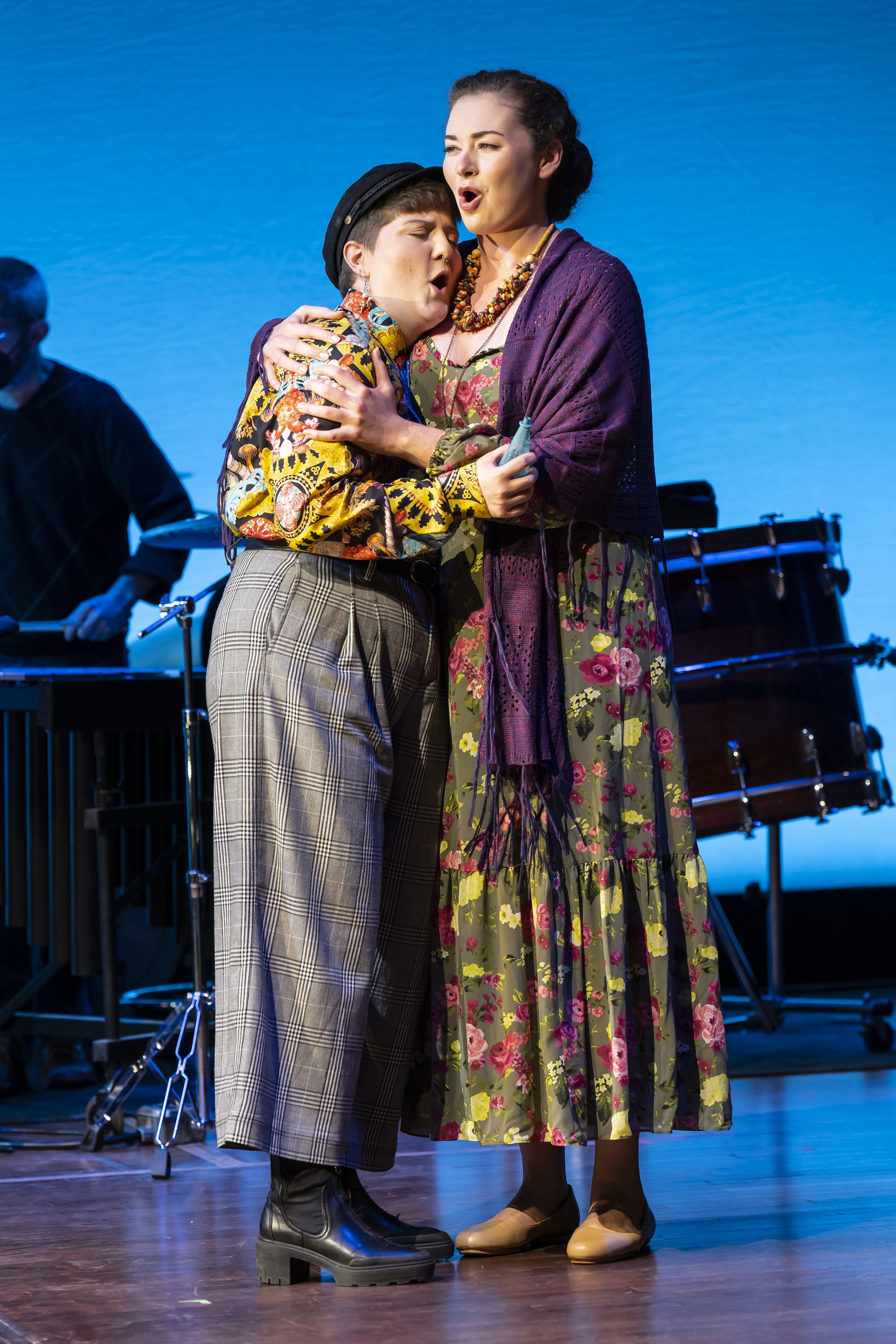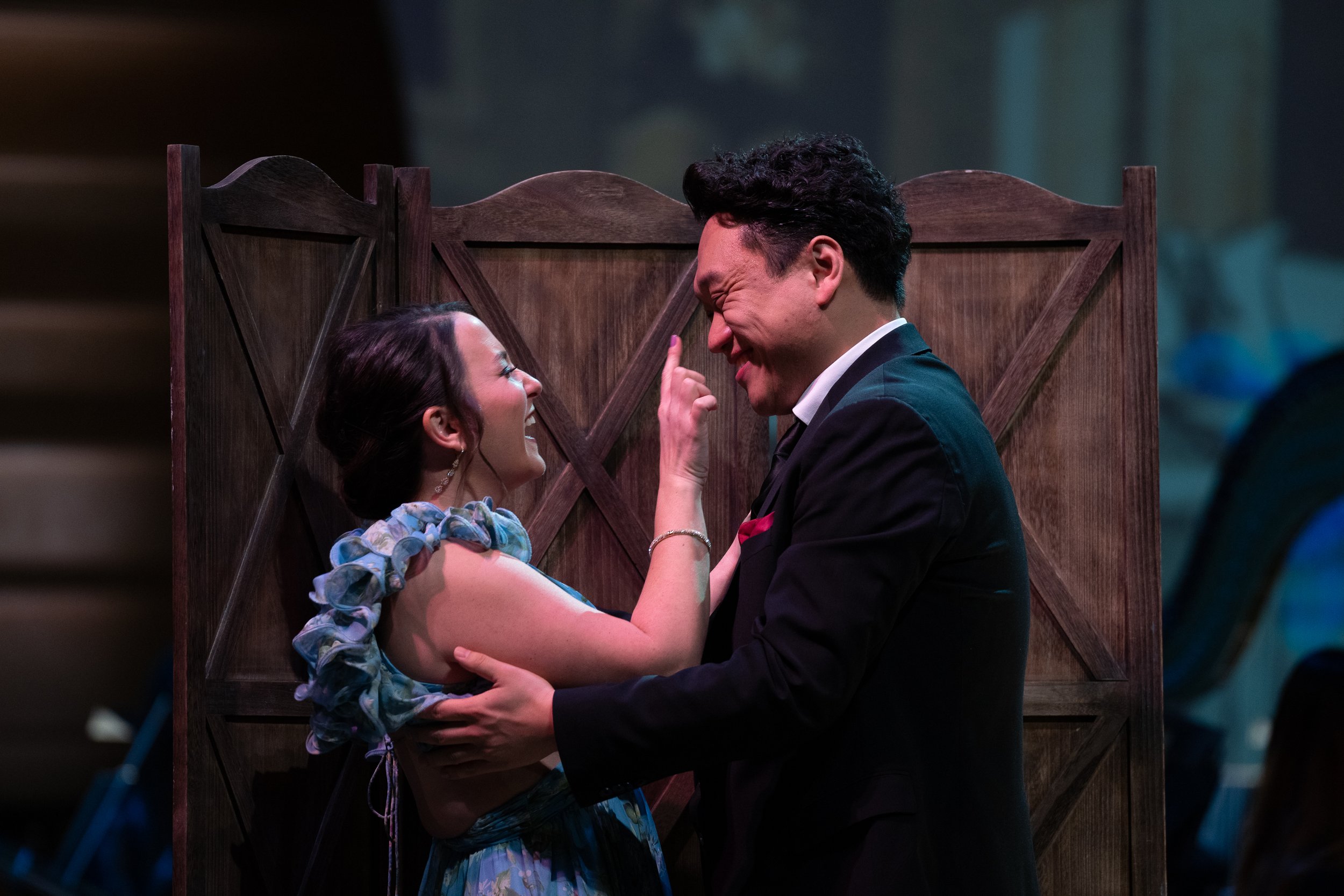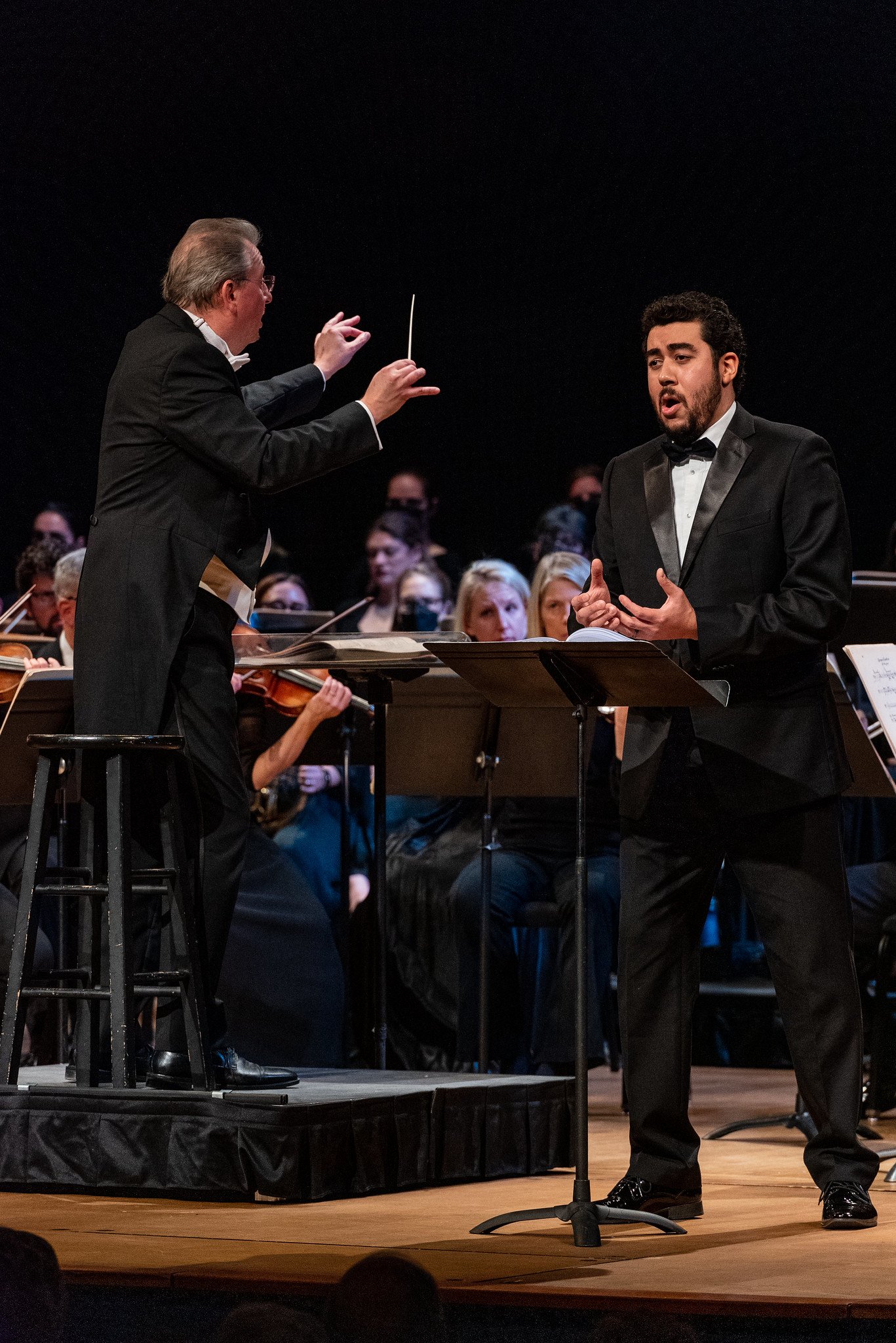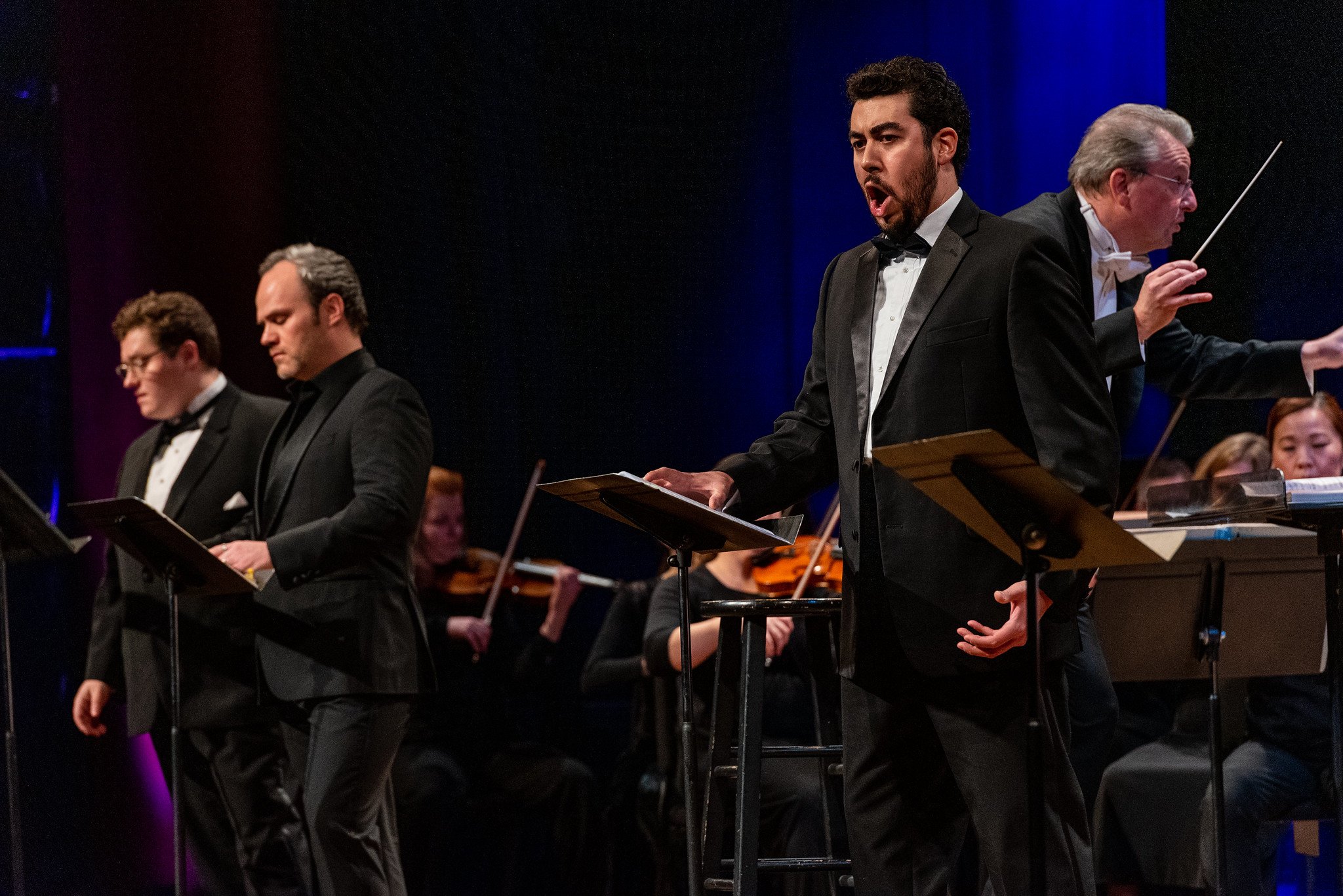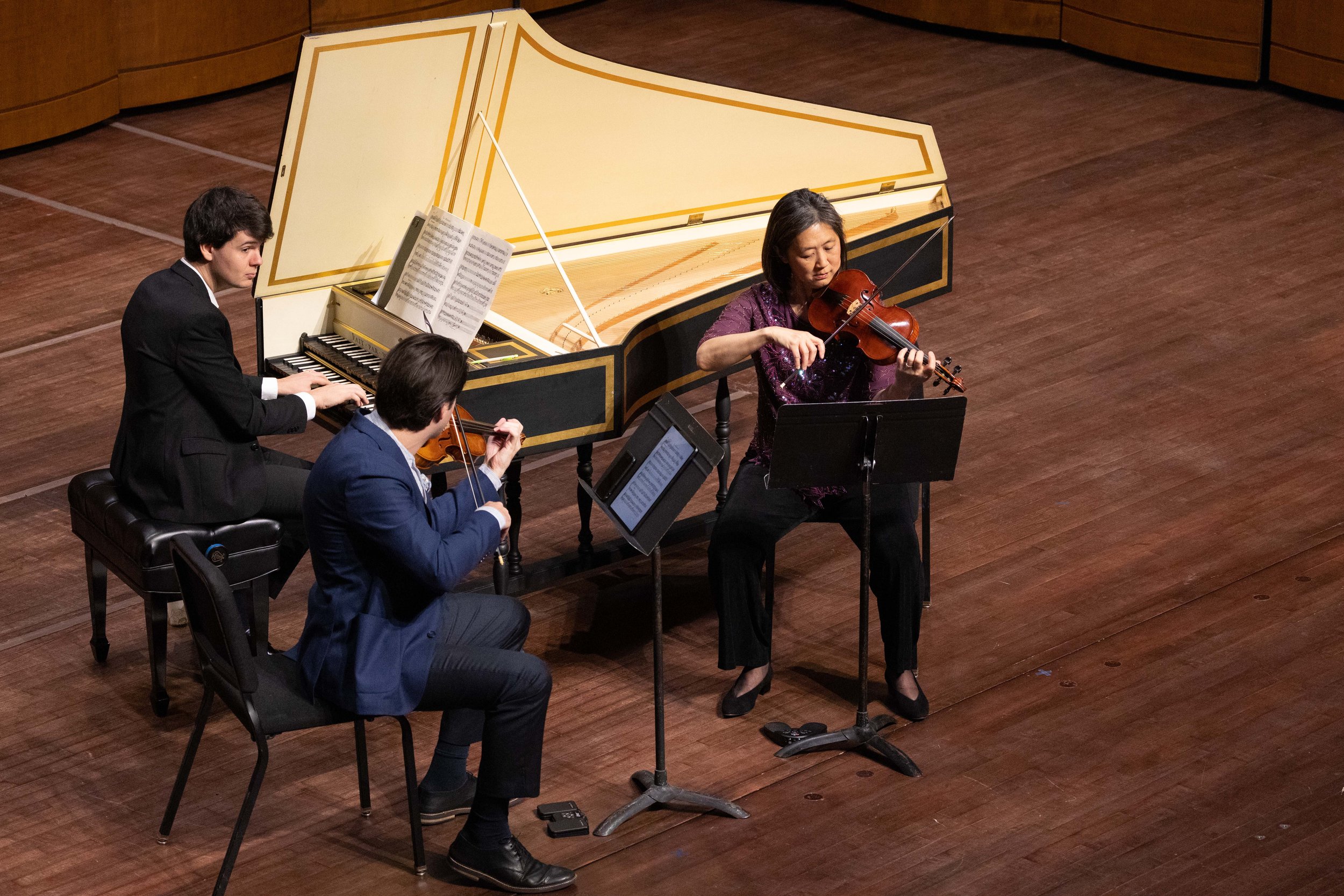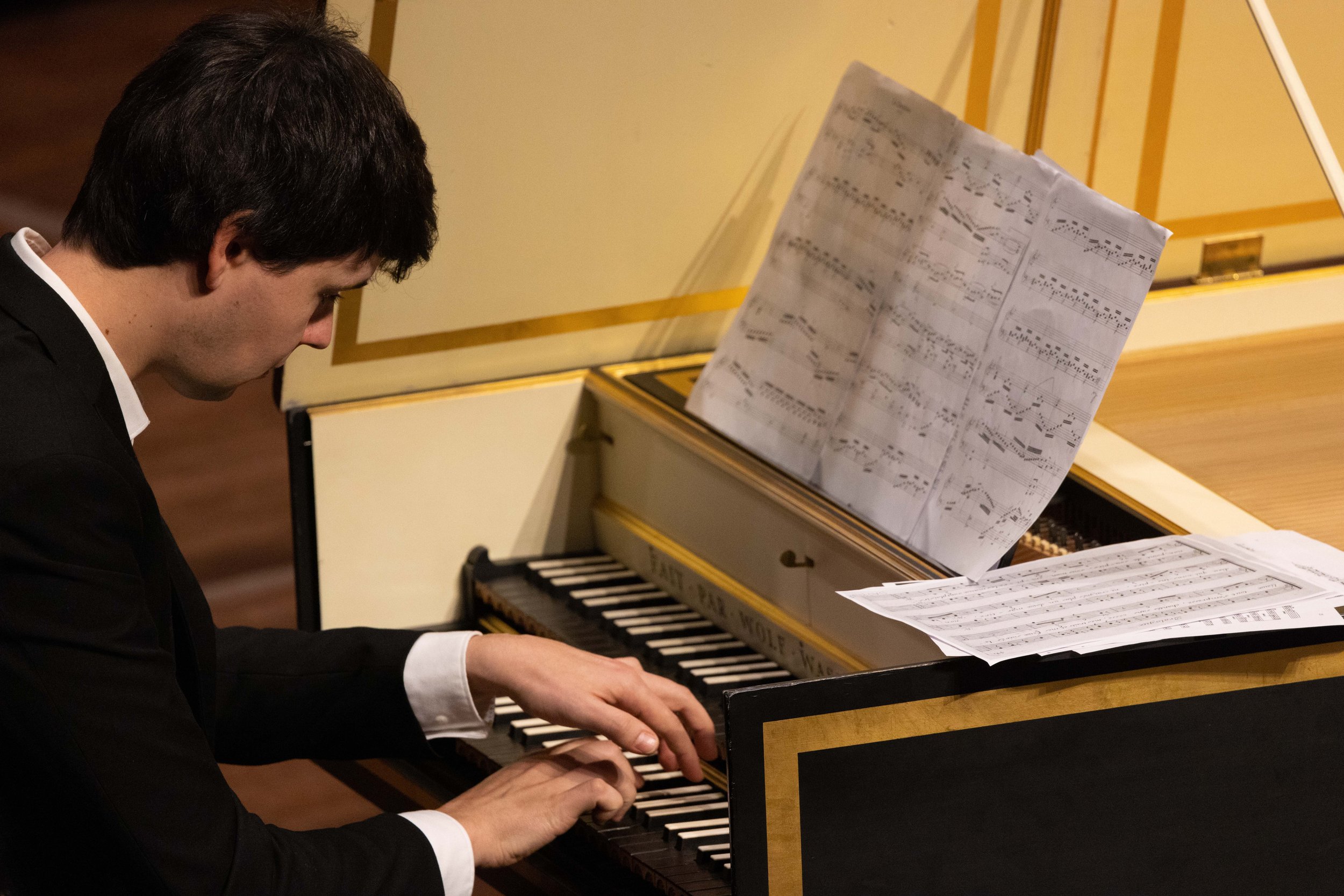I contend that La Traviata (1853) is the perfect opera (my son prefers Tosca, and I concede a case can be made for Madama Butterfly). Traviata has three acts, each a standout dramatically, and each filled with some of the most catchy, beautiful music and arias you will ever hear. Traviata will warm your heart with its love story and thrill you with its music, and in the end, will leave you weeping; but on the way home, you will start to hum and whistle the melodies you just enjoyed. With operas that are performed so frequently, one never knows how a stage director might present them to provide some novelty. Director Tara Faircloth chose a classic nineteenth century staging enhanced by a set that was a visual delight. Virginia Opera provided all that and introduced us to some standout singers new to the area in their weekend performances at George Mason’s Center for the Arts. If you are the rare person who hasn’t seen La Traviata before, I envy you the treat you have ahead.
Won Whi Choi as Alfredo and Brandie Inez Sutton as Violetta in center, surrounded by ensemble. Photo by Dave Pearson Photography; courtesy of Virginia Opera.
La Traviata’s composer was Giuseppe Verdi (1813-1901); need I say more? Traviata was the beginning of his middle period around 1850 in which he stepped up his game, following La Traviata with Rigoletto and Il Trovatore, a trio of operas that pushed him to the top of the opera world. He and his librettist Francesco Maria Piave based the opera on a book titled La Dame aux Camélias by Alexandre Dumas, fils (fils because he had the same name as his father, a more famous author – The Count of Montecristo and The Three Musketeers). Piave, who became a good friend of Verdi’s, wrote over seventy librettos, ten with Verdi. The play was inspired by the life of a real-life Parisian courtesan, Marie Duplessis, who died of consumption and with whom Dumas, the son, had had a non-exclusive liaison that lasted a little under a year. La Traviata is said to be Verdi’s most realistic opera. In opening comments, General Director Peggy Kriha Dye said that this was Virginia Opera’s eighth production of La Traviata.
Grant Youngblood as Giorgio Germont and Brandie Inez Sutton as Violetta. Photo by Dave Pearson Photography; courtesy of Virginia Opera.
(Spoiler alert – a synopsis follows) There are three roles in Traviata that are showcase roles: Violetta, the courtesan, Alfredo Germont, her lover, and Giorgio Germont, the father of Alfredo. But in truth, La Traviata is all about Violetta; you can’t get the soprano who sings Violetta wrong and have a good opera; more on that later. Violetta is a beautiful and highly popular courtesan who is beginning to suffer from tuberculosis in nineteenth century Paris where lavish salon parties are a regular part of French nightlife. She encounters Alfredo who has fallen in love for her. At first, she attempts to push him away. He lives for love, but she lives for pleasure. Slowly, Violetta finds herself deeply in love with Alfredo. They move in together in the Paris countryside and live blissfully for a while. Then Alfredo finds Violetta has been secretly selling her assets to cover their expenses and leaves for Paris to secure financing. In his absence, his father Giorgio appears and asks Violetta to give Alfredo up. Alfredo’s sister is engaged to a man from a proper family and if word gets out that Alfredo is involved with a courtesan, suburban cancel culture will block the marriage. At last Violetta agrees; Giorgio having gained respect for her honor promises his support. Violetta flees back to her courtesan life, leaving Alfredo devastated. He pursues her at a party, insults her, and throws money he has won at her. Giorgio arrives and castigates his son for his treatment of Violetta. His behavior leads to a duel and Alfredo goes abroad. In the final scene, Violetta is on her deathbed when Alfredo, knowing the whole story, returns to see her and again they declare their love for each other. She dies in his arms. Where did I put those tissues?
Won Whi Choi as Alfredo Germont and Grant Youngblood as Giorgio Germont. Photo by Dave Pearson Photography; courtesy of Virginia Opera.
There are four scenes with different sets, each a visual delight. I marveled at how beautiful and how believable the opening set and costumes for the ballroom scene were; same for the exotic party scene when Violetta returns to courtesan life. Their countryside living quarters and the final bedroom scene were quite lovely, quite mood enhancing. Kudos to the creative team, including Robert Little for scenic design, John Leymeyer for costume design, Molly Tiede for lighting design, and Elyse Messick for wig and make-up design.
Now let’s talk about who played Violetta. I trust VO’s Artistic Director and Conductor Adam Turner to make good choices in staffing VO’s productions, but I’m always a little edgy when going to hear a soprano I don’t know sing Violetta. His choice for Virginia Opera’s Violetta was more than fine; as each scene unfolded, she became more and more impressive. In her opening, I thought that this was a talented young performer with a strong, lovely voice worth hearing, though she seemed to labor a bit getting her flourishes just right. However, her confidence seemed to grow as the party goers left her and Alfredo alone, and then by the end of the scene, alone on stage, she was floating in a high register showing off her trills and coloratura; while some in the audience were shouting brava, I was thinking, “You go, girl!”. I am now a fan of soprano Brandie Inez Sutton. In the final Act, she owned the role. I’ve seen too many Traviata’s to get emotional, but by the end, she had tears in my eyes, perhaps the best performance in the death scene that I have experienced. Like many emerging, young opera stars, Ms. Sutton already has a wealth of experience, including performing at the Met Opera and internationally, that undergirds her confidence. I hope we get to see more of her.
Fran Daniel Laucerica as Gastone and Taylor-Alexis DuPont as Flora surrounded by Virginia Opera Chorus in the exotic party scene. Photo by Dave Pearson Photography; courtesy of Virginia Opera.
The leading men were also strong choices with whom I was unfamiliar. Alfredo needs to be youthful, appealing as a love interest, and a bit hot-headed. Tenor Won Whi Choi, who has also appeared at the Met proved to be an excellent choice; his burnished tenor voice fit the role perfectly. When he began, I was starting to compare him to great tenors. His acting was quite good, but then I thought his singing varied during the performance, ranging from outstanding and impressive to merely good and back to outstanding. This is a singer whose development is worth watching; he has a high ceiling. The pairing of an Asian tenor and a black soprano in these roles was noticeable and totally unconcerning; besides, it showed that love has no boundaries. Baritone Grant Youngblood, a veteran of many of the top opera stages, was an outstanding Giorgio, Alfredo’s father. Verdi and Piave made Giorgio a juicy part, a man on a mission forced to come to terms with feelings arising from his respect for the person of which he asks so much. Mr. Youngblood has a beautiful baritone voice and sang with impressive control, fully displaying the mixed feelings arising within his character.
Brandie Inez Sutton as Violetta and Erik Grendahl as Baron Duphol. Photo by Dave Pearson Photography; courtesy of Virginia Opera.
There are nine more named singers in supporting roles that contributed to the success of the production. I will single out four for special mention: Fran Daniel Laucerica as Gastone, Alfredo’s friend, Erick Grendahl as Alfredo’s rival Baron Duphol, Taylor-Alexis DuPont as Flora, Violetta’s friend, and Kayleigh Reiss as maid Annina. There were also twenty-four chorus members who performed as party goers and sang beautifully; Verdi always makes good use of the chorus as does Associate Conductor & Chorus Master Brandon Eldredge. Director Tara Faircloth had a challenge moving so many players around a relatively small stage. In general, the direction was excellent with some minor quibbles: some of the minor elements such as movements of the minor characters in the countryside setting lacked focus and definition; a more significant concern was that I did not find the confrontation where an emotionally distraught Alfredo insults and disgraces Violetta to have the dramatic impact it should (noted - my wife takes exception to this assessment); at that point no one in the audience should be able to breathe. On the other hand, that death bed scene was perfect.
Grant Youngblood as Giorgio Germont, Brandie Inez Sutton as Violetta, and Won Whi Choi as Alfredo. Photo by Dave Pearson Photography; courtesy of Virginia Opera.
Verdi’s gorgeous music is served up well by the Richmond Symphony under the direction of Maestro Adam Turner. The music ranges from the soft, sweet melancholy violins that open the prelude to the boisterous sounds of the party beginning on stage. The orchestra also played a huge role in producing perfectly accented music in the final scene that was so emotionally affecting.
Won Whi Choi as Alfredo and Brandie Inez Sutton as Violetta. Photo by Dave Pearson Photography; courtesy of Virginia Opera.
In measure now, for me, seeing La Traviata is like visiting an old friend. Virginia Opera’s production and cast made it a memorable visit. If you haven’t seen it, what are you waiting for? If you have seen it before, go visit your old friend; you’ll be the better for it.
The Fan Experience: Virginia Opera’s performances of La Traviata have been completed for Norfolk and Fairfax. Two more remain in Richmond on March 17 and 19. The opera was sung in Italian with English subtitles shown overhead.
The pre-opera talk by VO’s scholar in residence by Joshua Borths begins 45 minutes prior to curtain time. Prior to each new VO production, he conducts a zoom one hour meeting where he presents information about the opera. His presentation is recorded and placed online. You can access the discussion of La Traviata at the following link. It’s worth watching just to hear his comments on the development of the Verdi style.






















































